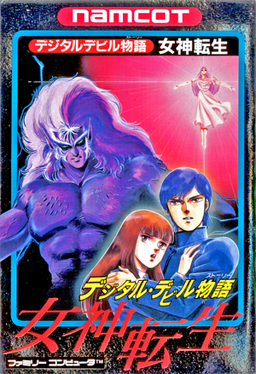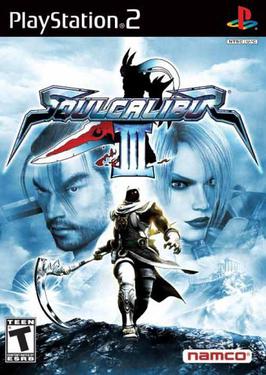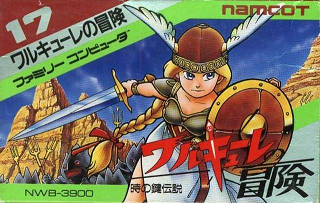Ken Sugimori is a Japanese video game designer, illustrator, manga artist, and director. He is best known as the primary character designer and art director for the Pokémon franchise. Sugimori is also credited with the art direction for other titles, including Pulseman. Sugimori drew and finalized all of the original 151 Pokémon. He has also worked on the various Pokémon films, trading cards, and other games like the Super Smash Bros. series.
1986 saw many sequels and prequels in video games, such as Super Mario Bros. 2, along with new titles such as Arkanoid, Bubble Bobble, Castlevania, Dragon Quest, Ikari Warriors, The Legend of Zelda, Metroid, Out Run and R.B.I. Baseball. The year's highest-grossing arcade video games were Hang-On in Japan, Hang-On and Gauntlet in the United States, and Nemesis (Gradius) in London. The year's best‑selling home system was the Nintendo Entertainment System (Famicom) for the third year in a row, while the year's best-selling home video games in Western markets were Super Mario Bros. in the United States and Yie Ar Kung-Fu in the United Kingdom.

Digital Devil Story: Megami Tensei refers to two distinct role-playing video games based on a trilogy of science fantasy novels by Japanese author Aya Nishitani. One version was developed by Atlus and published by Namco in 1987 for the Famicom—Atlus would go on to create further games in the Megami Tensei franchise. A separate version for personal computers was developed and published by Telenet Japan with assistance from Atlus during the same year.

The Tower of Druaga is a 1984 arcade action role-playing maze game developed and published in Japan by Namco. Controlling the golden-armored knight Gilgamesh, the player is tasked with scaling 60 floors of the titular tower in an effort to rescue the maiden Ki from Druaga, a demon with eight arms and four legs, who plans to use an artifact known as the Blue Crystal Rod to enslave all of mankind. It ran on the Namco Super Pac-Man arcade hardware, modified with a horizontal-scrolling video system used in Mappy.

The Quest of Ki is a 1988 video game developed by Game Studio and published by Namco for the Family Computer. It is the third game in Babylonian Castle Saga series which started with the 1984 arcade game, The Tower of Druaga.

Soulcalibur III is a fighting video game produced by Namco as a sequel to Soulcalibur II and the fourth installment in the Soulcalibur series. It was originally released for the PlayStation 2 in 2005. An improved arcade version, Soulcalibur III: Arcade Edition, was released in 2006. It was the last Soulcalibur game to receive an arcade version, as IV onwards did not have an arcade release, and was also the last to be released by Namco as an independent company, as it would merge with Bandai's video game division to form Bandai Namco Entertainment in 2006. It is the second in the Soulcalibur series’ 1590 A.D. trilogy games, between II and IV.

Marvel Land is a platform game released by Namco in arcades in 1990. It runs on the Namco System 2 hardware. The game was published for the Mega Drive in 1991, with the European version renamed Talmit's Adventure. The game shares its name with the fictitious kingdom where the 1986 Japan-only Famicom game Valkyrie no Bōken: Toki no Kagi Densetsu takes place, but has no connections with it otherwise. Likewise the game has no connections with Marvel Comics or any of their associated characters either. In December 2022, the arcade version of Marvel Land was re-released exclusively in Japan on the Nintendo Switch and the PlayStation 4 on the Arcade Archives lineup of digital arcade titles. It was originally planned for worldwide release at one point but was ultimately cancelled due to licensing issues with Disney and Hamster Corporation.

The Return of Ishtar is an action role-playing arcade video game released by Namco in 1986. It runs on Namco System 86 hardware and is the sequel to The Tower of Druaga, which was released two years earlier. The game's story directly starts after the first game, where Ki and Gil must venture down in the Tower of Druaga and escape it. It is the second game in the company's Babylonian Castle Saga series, and was later ported to the MSX, NEC PC-8801, FM-7, and Sharp X68000 platforms. The Return of Ishtar was included in the compilation game Namco Museum Volume 4 for the PlayStation, which is also the first time the game had been released overseas.

Getsu Fūma Den is an action role-playing video game developed and published by Konami for the Family Computer in 1987 exclusively in Japan. It has been referenced in many subsequent Konami titles throughout the years. The game is structurally similar to Castlevania II: Simon's Quest, The Goonies II and Teenage Mutant Ninja Turtles (NES).

The Epic of Gilgamesh has directly inspired many manifestations of literature, art, music, and popular culture, as identified by Theodore Ziolkowski in the book Gilgamesh Among Us: Modern Encounters With the Ancient Epic (2011). It was only during and after the First World War that the first reliable translations of the epic appeared that reached a wide audience, and it was only after the Second World War that the epic of Gilgamesh began to make itself felt more broadly in a variety of genres. In the years following World War II, Gilgamesh, formerly an obscure figure known only by a few scholars, gradually became increasingly popular with modern audiences. The Epic of Gilgamesh's existential themes made it particularly appealing to German authors in the years following the war. In his 1947 existentialist novel Die Stadt hinter dem Strom, the German novelist Hermann Kasack adapted elements of the epic into a metaphor for the aftermath of the destruction of World War II in Germany, portraying the bombed-out city of Hamburg as resembling the frightening Underworld seen by Enkidu in his dream. In Hans Henny Jahnn's magnum opusRiver Without Shores (1949–1950), the middle section of the trilogy centers around a composer whose twenty-year-long homoerotic relationship with a friend mirrors that of Gilgamesh with Enkidu and whose masterpiece turns out to be a symphony about Gilgamesh.

The Nightmare of Druaga: Fushigi no Dungeon is a roguelike video game developed by Arika, Matrix Software, and Chunsoft, published in 2004 in Japan by Arika and in North America by Namco Hometek exclusively for the PlayStation 2. It is a sequel to The Tower of Druaga and the eighth game in Chunsoft's Mystery Dungeon series.
The Tower of Druaga: The Aegis of Uruk and its sequel, The Tower of Druaga: The Sword of Uruk, is a Japanese anime television series, created by Gonzo, and is an animated reboot/continuation of Namco's Babylonian Castle Saga video game franchise which began as an arcade game, The Tower of Druaga, originally released in 1984. This series is amongst the first to be officially broadcast on the internet by Gonzo simultaneously in Japanese and subtitled in English on YouTube, and BOST TV.

Valkyrie no Bōken: Toki no Kagi Densetsu is a video game developed and published by Namco. It was released in Japan for the Family Computer on August 1, 1986. It was also released for the Virtual Console of multiple Nintendo consoles, for the Wii on March 20, 2007, for the Nintendo 3DS on September 4, 2013 and for the Wii U on February 4, 2015.
Game Studio Corporation Ltd. (株式会社ゲームスタジオ) is a video game production company headquartered in Shinagawa, Tokyo, Japan. It was founded on August 14, 1985, by former Namco employee Masanobu Endō, who continued to develop projects for Namco through his company. The company later made a subsidiary company called Mobile & Game Studio, while the goodwill was transferred.
Masanobu Endō is a Japanese game designer, president of Game Studio and Mobile & Game Studio, and the director of Digital Games Research Association Japan. He formerly worked for Namco, where he created arcade games and is best known for Xevious and The Tower of Druaga, which were important titles in the scrolling shooter and action role-playing game genres, respectively.
Let's! TV Play Classic is a series of Japan-only plug & play devices developed and distributed by Bandai programmed on XaviX software created by SSD Company Limited in 2006 that contain arcade games from either Namco or Taito, with Namco's being called "Namco Nostalgia" while Taito's are called "Taito Nostalgia". Each device in the series contains 4 games, with 2 being classic arcade games while the other 2 are new games using the original game's sprites developed by Bandai.
Birthday Ltd. is a Japanese video game developer and character design firm based in Akasaka, Minato, Tokyo. The company developed the Kaijū Monogatari games and designs of the manga and anime series Fushigiboshi no Futagohime.

Mach Breakers: Numan Athletics 2 is a sports arcade game that was released by Namco in 1995; it runs on Namco NB-2 hardware and is the sequel to Numan Athletics, which was released in the previous year.











